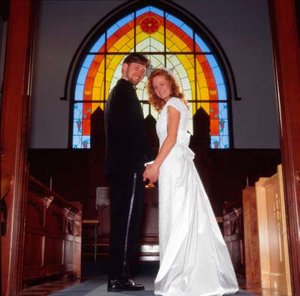articles/Lighting/digitalmetering-page2
Lighting for Digital - Metering - a lost art? - part 2 of 1 2 3
by Dave Montizambert Published 01/04/2007

Metering is fast becoming a "lost photographic art" due to the sophisticated auto exposure features on most modern cameras and with the advent of digital capture with instant preview. However, for really serious lighting, solid metering skills are still key for getting perfect lighting ratios and accurate exposures in the shortest time possible. For instance, if a photographer shooting with a digital SLR camera wanted to make a backdrop a certain brightness, or fill in the shadows on a subject to a certain brightness, he/she would probably rely on viewing the results on the preview displayed on the back of the camera. They would fire the camera, view the preview, adjust the power or distance of the lights, then repeat this procedure as many times as necessary until the lighting looked right. Obviously this takes a lot longer than using a hand-held meter, where you would take a reading, adjust and read again. This is exactly how I controlled the brightness level of the shadows in Image 1 of the scarylooking bodybuilder - wanting high shadow contrast for a dramatic feel, meter readings helped me quickly adjust the fill light until there were 3 stops less light hitting the shadow areas than was striking the bodybuilder's fully lit areas.
Metering is not only faster but is more accurate than relying on the LCD preview screen. The tiny preview screen on the back of a digital SLR camera is not good enough to make accurate lighting decisions from - with high-contrast lighting such as this bodybuilder image, can you imagine trying to judge from the tiny screen what shadow areas will hold detail and which ones will not? Also, using a meter to dial in preliminary ratios is also a lot faster than loading the captures over to your computer to preview.
All this is not to say that I am against instant preview - seeing the image immediately is one of the greatest things that digital gives us, it is a real bonus to see what is going on in addition to hard cold metering values. I believe that the most powerful stress-free way to create lighting is to meter first, quickly getting the lighting as close as possible to what you think you want, then capture and load over a preliminary image to view and read brightness values in your image processing/editing software on your recently profiled monitor. Obviously this is the ideal way to work and for some shooters such as photojournalist photographers, photojournalist-style wedding photographers and event photographers, who do not create lighting anyway, precise metering of the scene is probably not practical since "the scene" will have moved on by the time you have done the maths. Having said that, many wedding photographers constantly switch hats from being photojournalist to portraitist. For instance after having shot a series of images of the bride and groom racing down the aisle there may be time for a "set up" formal shot like in images 2 and 3. Here a quick reflective meter reading was taken off the backlit/sunlit stained-glass window in image 2 to help find the perfect speed to "drag" the shutter for the perfect background exposure as in image 3 after the on-camera flash had illuminated the subjects correctly.

In addition to sophisticated in-camera metering and instant preview, most modern digital SLR's give us a histogram preview to judge our exposures. Unfortunately a histogram, see image 4, does not offer much information in terms of lighting such as lighting ratios - it is really more of a course graphic indication of how your overall exposure sits on a scale of 0 - 255 levels of brightness. See side bar for more info on how a histogram actually works.
So it seems that we should not throw out our meters just yet, that many of us who actually create lighting would do well to pull their meters from amongst their mouldering film cameras and moth balls, give them a good dusting and a new battery, then slip them into our camera bags right next to the beloved digital SLR.
In my next article we will look at how to use our meters for metering lighting for digital in the most efficient way possible.
Please Note:
There is more than one page for this Article.
You are currently on page 2
- Lighting for Digital - Metering - a lost art? page 1
- Lighting for Digital - Metering - a lost art? page 2
- Lighting for Digital - Metering - a lost art? page 3
1st Published 01/04/2007
last update 09/12/2022 14:53:20
More Lighting Articles
There are 0 days to get ready for The Society of Photographers Convention and Trade Show at The Novotel London West, Hammersmith ...
which starts on Wednesday 15th January 2025





